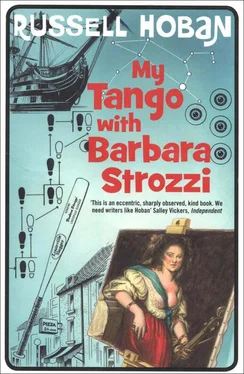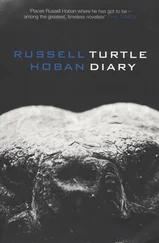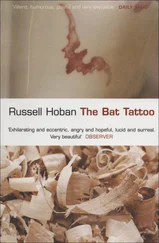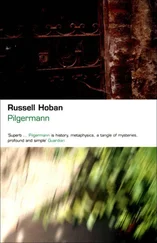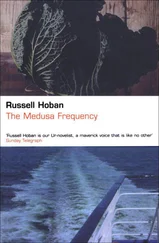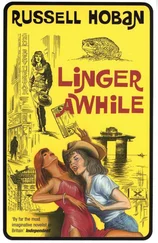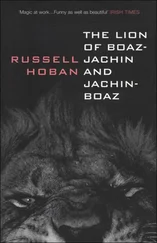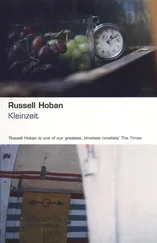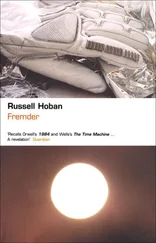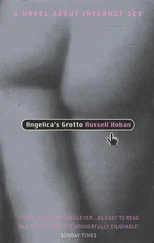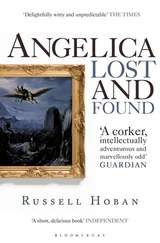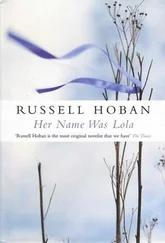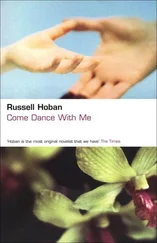Russell Hoban - My Tango With Barbara Strozzi
Здесь есть возможность читать онлайн «Russell Hoban - My Tango With Barbara Strozzi» весь текст электронной книги совершенно бесплатно (целиком полную версию без сокращений). В некоторых случаях можно слушать аудио, скачать через торрент в формате fb2 и присутствует краткое содержание. Год выпуска: 2007, Издательство: Bloomsbury UK, Жанр: Современная проза, на английском языке. Описание произведения, (предисловие) а так же отзывы посетителей доступны на портале библиотеки ЛибКат.
- Название:My Tango With Barbara Strozzi
- Автор:
- Издательство:Bloomsbury UK
- Жанр:
- Год:2007
- ISBN:нет данных
- Рейтинг книги:5 / 5. Голосов: 1
-
Избранное:Добавить в избранное
- Отзывы:
-
Ваша оценка:
- 100
- 1
- 2
- 3
- 4
- 5
My Tango With Barbara Strozzi: краткое содержание, описание и аннотация
Предлагаем к чтению аннотацию, описание, краткое содержание или предисловие (зависит от того, что написал сам автор книги «My Tango With Barbara Strozzi»). Если вы не нашли необходимую информацию о книге — напишите в комментариях, мы постараемся отыскать её.
My Tango With Barbara Strozzi — читать онлайн бесплатно полную книгу (весь текст) целиком
Ниже представлен текст книги, разбитый по страницам. Система сохранения места последней прочитанной страницы, позволяет с удобством читать онлайн бесплатно книгу «My Tango With Barbara Strozzi», без необходимости каждый раз заново искать на чём Вы остановились. Поставьте закладку, и сможете в любой момент перейти на страницу, на которой закончили чтение.
Интервал:
Закладка:
As before, I left the zone of conviviality and crossed to the left side of the street. Below me on the left the long shape of the main line showed its dim blind lights as I was swallowed up in the visible darkness. My mind brings up the same words or songs when I revisit a place, so now it gave me, as before:
The moon’s my constant Mistrisse
And the lowlie owle my morrowe,
The flaming Drake and the Nightcrowe make
Mee musicke to my sorrowe.
As before, there was no moon.
The voices and laughter and music not of this time had stopped only a moment ago and now the silence rose up tumultuous. From Benjamin Street on the opposite side came volleys of reproach from left-handed slingers. Turk’s Head Yard knotted me in intricacies of regret. Slightly downhill on Turnhill became, as before, slightly uphill as I neared Clerkenwell Road. Turned right into Clerkenwell Road, then crossed into Clerkenwell Close where the Crown Tavern beckoned but carried on and around a dark corner and there was St James’s Church high above the rest of London, its spire aimed at the night sky where my Moon was opposed by Pluto, there was possible action pending from dangerous females, things looked generally dodgy and it behoved me to watch my ass.
‘Now what?’ I said to myself.
‘How about work?’ was my answer. So I went home and took up my narrative following the tango lesson and carrying on through my telling Bertha about The Rainmaker and our first kiss. The future had seemed bright then. And now the Louisville Slugger stood in its corner unused and Bertha/Barbara was gone. No matter how many times I said that to myself I couldn’t accept it as reality.
12 Bertha Strunk
Life with Brian was all that I expected it to be. We were comfortable in every way and the improvement in his work was impressive. But I was feeling two different kinds of guilt. There was the obvious one from how I’d ill-used Phil and there was the ingrained one of my Protestant Work Ethic; I was shirking a heavy job and I was ashamed of my laziness. Living with a writer who wrote boring would be hard work but where is it written that life was meant to be easy? Maybe I could get used to it, like bad breath or premature ejaculation. Or maybe he might get into less boring — you never can tell.
Brian could see that I wasn’t easy in my mind. ‘Maybe,’ he said, ‘it would help if we took a little break.’
‘I don’t know,’ I said.
‘We could go to Paris for a few days or a week. How about it?’
‘I guess I could get a week off.’
‘Good. As soon as you give me the word I’ll book us on Eurostar and into a hotel.’
So I talked to Karl and Georg and the following Monday we were on the train and there was that little travel-thrill to take my mind off my troubles. London zipped past, then Kent, then came the darkness of the tunnel, then France.
When we pulled into the Gare du Nord I felt as if we were really away from what we’d left behind. The sounds and echoes were full of farawayness; the roman numerals on the old clock told a different time. We queued for a taxi with smiling patience, no hurry. ‘De Fleurie Hôtel,’ Brian said to the driver. To me he said, ‘I think you’ll like it. It’s in St Germain des Près, the Latin Quarter. For your first time in Paris, the Left Bank is a good place to start.’
‘Have you stayed at this hotel before?’ I said.
‘No,’ he said, ‘but I Googled very carefully and looked at photos.’ It was a sunny day and Paris was delightful as it went past the taxi windows. The three-star hotel was as charming as advertised and from our window we could look across the river to the Eiffel Tower. We had champagne with our dinner and the whole thing felt a little like trying too hard but I was willing to try.
Brian made a big effort — we went to a lot of places and did a lot of things but most of it was lost on me in my current frame of mind. In any case I’m not good tourist material; I tend to fasten on one thing and let everything else pass me by. It was the gargoyles of Notre Dame that got to me. We earned a close view of them by a long weary climb up hundreds of steps, even as far as the great bells. Then out into the air with all Paris spread below and the gargoyles looking out on their domain. For me they are the true soul of Notre Dame, these stone creatures that seem to hold in themselves all the sorrow and cruelty of life and the world. Also the sorrow and cruelty of God, maybe, who put into human minds the idea of these animals and demons, especially the one who’s eating a human victim like a banana while others brood and think their stone thoughts high above their city.
We climbed up to Sacre Coeur, we rode down the Seine in a bateau mouche , we walked in the Tuileries and the Luxembourg Gardens. We dined at charming little restaurants and drank a lot of wine, some of it in the Place de Vosges with bags of pistachio nuts. We visited the Jeu de Paume, the Musée Rodin (I liked Camille Claudel’s work better than his), the Musée Carnavalet and the Musée d’Orsay. We went to the Louvre but only to the bookshop — the rest of it was too crowded. In the Musée d’Orsay there’s a large Daumier sketch of Don Quixote and Sancho Panza encountering a dead ass.
‘Daumier!’ said Brian, ‘there’s nobody like him. His Quixote paintings are his best work. There’s an oil sketch in a book I have at home, Quixote and Sancho on Rosinante and Dapple — it’s nothing but light and shadow. The gridwork Daumier used for transferring his sketches is clearly visible, and the Don and Rosinante are leaning through it as if moving into the fourth dimension. It’s absolutely a metaphysical painting. We’ll visit his tomb when we go to Père Lachaise. And while we’re there you can also put flowers in Victor Noir’s hat and rub his boots and crotch for luck.’
‘Who’s Victor Noir?’
‘He was a young journalist shot in 1870 by Pierre Bonaparte. The story (unauthenticated) is that he was caught with Bonaparte’s wife.’
‘Why would I rub his boots and his crotch for luck?’
‘Thousands do — you’ll see when we’re at his tomb.’
The next day after lunch at a brasserie we took the Metro to Père Lachaise and walked down the Boulevard Ménilmontant to the entrance where Brian bought a map of the cemetery and I bought a yellow rose.
‘Have you got someone in mind for that?’ he said.
‘I don’t know yet.’
The morning had been sunny but the sky had become grey and overcast; an air of gentle melancholy pervaded the place and I found it very comfortable.
‘“He that dies this year is quit for the next,”’ quoted Brian. ‘Everyone here is a fully paid-up mortal. They died peacefully or violently, publicly or privately, famously or obscurely, and here they lie, each with a name and number on the map. But not all who died here have names and numbers: for some there’s only a wall, the Mur des Fédérés: hundreds of members of the Paris Commune were stood up against it in 1871 and shot in batches. I read in Frommer’s that a handful survived and lived in the vaults like wild animals for years. They’d come out at night to forage for food in Paris. Frommer’s doesn’t say what happened to their bodies when they died.’
‘They must be ghosts now,’ I said, ‘and probably they’re known by name to the other ghosts: Héloïse and Abelard,’ I read, ‘Chopin, Jane Avril but no Toulouse-Lautrec. Here’s Daumier next to Corot at vingt-quatrième ’.
‘Jim Morrison is here too,’ said Brian. ‘He pulls the most visitors.’
‘He’s probably the life of the party after midnight.’
‘More like all night; I’m sure they rock around the clock. Look at the names on the map — it’s a pretty wild crowd here.’
Читать дальшеИнтервал:
Закладка:
Похожие книги на «My Tango With Barbara Strozzi»
Представляем Вашему вниманию похожие книги на «My Tango With Barbara Strozzi» списком для выбора. Мы отобрали схожую по названию и смыслу литературу в надежде предоставить читателям больше вариантов отыскать новые, интересные, ещё непрочитанные произведения.
Обсуждение, отзывы о книге «My Tango With Barbara Strozzi» и просто собственные мнения читателей. Оставьте ваши комментарии, напишите, что Вы думаете о произведении, его смысле или главных героях. Укажите что конкретно понравилось, а что нет, и почему Вы так считаете.
